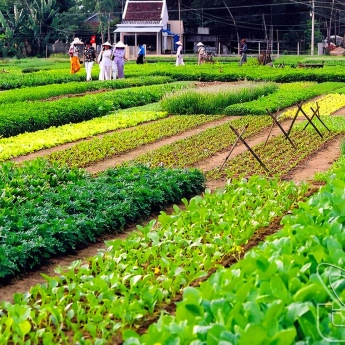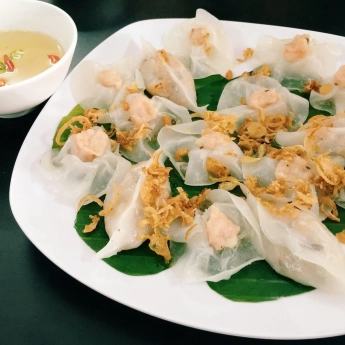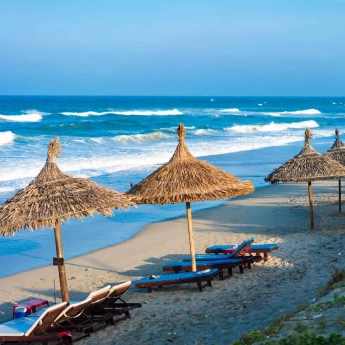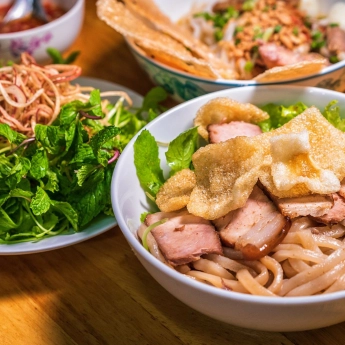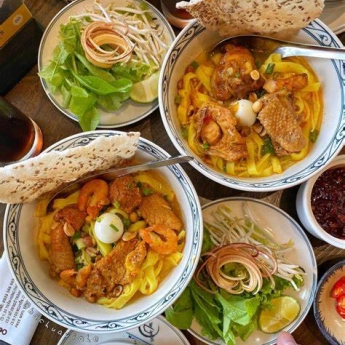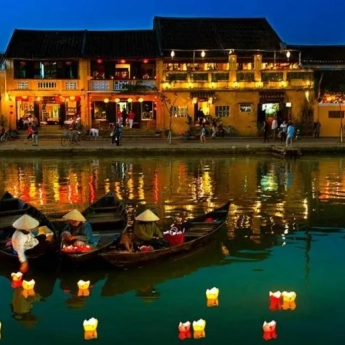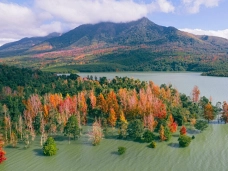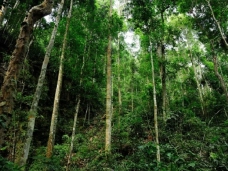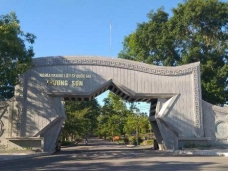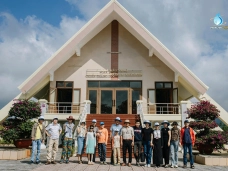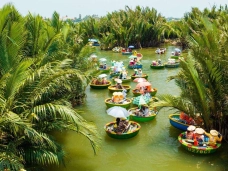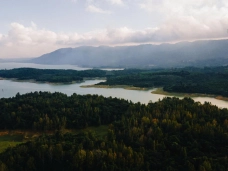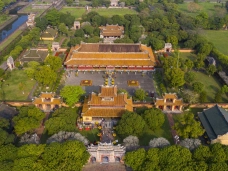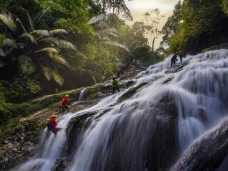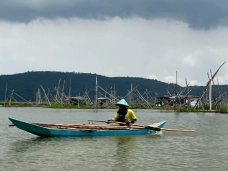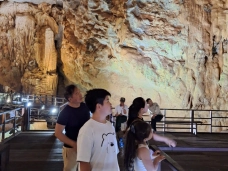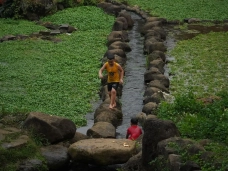Quảng Nam
16-05-2024 00:00
Location
Highlight Image
Quang Nam Province, nestled in the heart of Central Vietnam, is a harmonious blend of mountains, plains, and sea—a region affectionately known as the "waistline of Vietnam." Blessed with breathtaking landscapes and home to ancient wonders shaped by nature and time, Quang Nam consistently ranks among the top destinations for travelers in Vietnam.
Visitors to Quang Nam will be enchanted by a variety of stunning attractions, from the ancient town of Hoi An, the oldest trading port in Southeast Asia, to the pristine Cua Dai Beach, the sacred My Son Sanctuary, and the serene Cham Islands. Beyond these, the picturesque landscapes of Nui Thanh and the province's renowned craft villages add to its charm.
Each destination offers its own unique beauty, promising travelers unforgettable experiences and a deeper connection to the rich cultural and natural heritage of Quang Nam.

History
Quang Nam carries a rich and storied past. Once the capital of an ancient kingdom that thrived for 15 centuries, it became part of Dai Viet under the reign of King Le Thanh Tong in 1471. During the Trinh-Nguyen civil war, Quang Nam fell under the administration of the Nguyen Lords in 1570.
Hoi An, as the only port open to foreign trade at the time, earned Quang Nam the moniker “Quang Nam Kingdom” among international merchants.
Following Vietnam’s reunification, Quang Nam, Quang Tin, and Da Nang were merged. However, in 1997, the region was split into two independent administrative units: Da Nang City and Quang Nam Province. Since then, Quang Nam has become a distinct gem in Central Vietnam’s tourism landscape, known for its cultural and natural treasures.
Nature and Culture
Quang Nam is blessed with pristine natural beauty. It boasts 15 islands, 10 lakes, 9 major rivers, and 125 kilometers of coastline. Among its many gems is the Cham Islands Biosphere Reserve, renowned for its vibrant coral reefs, crystal-clear waters, and thriving marine life. It’s one of Vietnam’s top destinations for snorkeling and scuba diving.
The province is also home to rolling plains and lush rice fields that ripple like ocean waves. Remarkably, half of Quang Nam’s land is covered by tropical rainforests, home to rare flora and fauna, as well as cool waterfalls and pristine streams. Coastal mangrove forests not only protect the land during storms but also serve as vital nurseries for marine life.
Quang Nam is a cultural crossroads, shaped by the Sa Huynh culture, which dates back to 1,000 BCE. It is home to 55 national and 282 provincial heritage sites, including two UNESCO World Heritage Sites: the Ancient Town of Hoi An and the My Son Sanctuary. Other notable landmarks include the Cham tower complex and the ancient Tra Kieu citadel.
The province also boasts over 300 intangible cultural heritages, including 120 traditional festivals and unique art forms such as Tuong (classical opera), Bai Choi singing, and Ho Ba Trao chants. Traditional crafts, culinary arts, and folk wisdom add further depth to Quang Nam’s vibrant cultural tapestry.
The mountainous regions of Quang Nam are home to ethnic minorities such as the Co Tu, Cor, and Xe Dang. Their cultural practices, from Gươl houses to gong performances and oral storytelling, paint a vivid picture of the province’s diversity.
Top Destinations
Hoi An Ancient Town
Recognized as a UNESCO World Heritage Site, Hoi An is a serene enclave spanning just 2 km² but teeming with charm and history. Its iconic yellow walls, tiled rooftops, and narrow lanes along the Hoai River exude a timeless beauty. Visitors can explore the Japanese Covered Bridge, a symbol of cultural harmony, or the Tan Ky Old House, which has hosted dignitaries from across the globe.
An Bang Beach
This tranquil, unspoiled beach is a haven for those seeking peace and natural beauty. Lined with quaint eateries, cafes, and bars offering stunning ocean views, An Bang is the perfect spot to unwind. Visit between 3 and 5 PM to watch a mesmerizing sunset and enjoy a delightful dinner by the sea.

Cham Islands: A Gem of Nature and Culture
The Cham Islands, a cluster of eight islets under the jurisdiction of Tan Hiep Commune in Hoi An City, Quang Nam Province, lie just 18 km off the coast of Cua Dai. Among them, Hon Lao Island is the largest and tallest, spanning 13.82 km² and reaching an elevation of 517 meters. With its cool, pleasant climate year-round, the Cham Islands are a haven for rare marine life and a rich source of bird’s nest treasures.
In 2009, UNESCO designated the Cham Islands as a World Biosphere Reserve, underscoring its ecological importance. Visiting the Cham Islands offers travelers unforgettable experiences: fishing alongside local fishermen, camping by the beach, diving to admire vibrant coral reefs, and indulging in freshly caught seafood.
Tra Que Vegetable Village: A Harmony of Nature and Heritage
Located in Cam Ha Commune, just 3 km from Hoi An, Tra Que Village is renowned for its organic vegetable farming, practiced by 200 households across approximately 400 hectares. Originally named Nhu Que, the village specialized in growing aromatic herbs like cinnamon. In the 18th century, a Nguyen Dynasty king visited the village and was captivated by the vegetables' spicy aroma, reminiscent of cinnamon, and their floral sweetness, akin to tea blossoms. Thus, the name was changed to Tra Que.
Today, Tra Que continues its age-old organic farming methods, cultivating herbs like scallions, mint, perilla, and cilantro. The vegetables are irrigated with clean groundwater and fertilized with algae from local lagoons, ensuring lush, healthy crops.
The village’s tranquil, picturesque fields offer a serene escape, embodying the charm of a traditional Central Vietnamese countryside. Tra Que has become a favorite destination for visitors to Hoi An, drawn by its peaceful beauty and the simple, authentic rhythms of daily life.

My Son Sanctuary: A Journey into the Ancient Kingdom of Champa
Located in Duy Phu Commune, Duy Xuyen District, Quang Nam Province, My Son Sanctuary lies 70 km from Da Nang and 40 km from Hoi An. Once a sacred Hindu site of the Champa Kingdom, this historical complex features over 70 temples and towers, showcasing diverse architectural styles that reflect different eras of Champa history.
Exploring My Son is like stepping back in time, where the intricate carvings and weathered structures tell stories of a bygone era. The sanctuary’s ancient beauty and spiritual significance create an unforgettable experience for travelers seeking a glimpse into Vietnam’s rich cultural heritage.
Culinary Delights of Quang Nam
Mi Quang
In Quang Nam, Mi Quang is as ubiquitous as pho in Hanoi, with small eateries serving this beloved dish on nearly every corner. The dish features thinly sliced rice noodles in a flavorful broth, accompanied by chicken, snakehead fish, eel, beef, shrimp, or even frog. Topped with crispy rice crackers, roasted peanuts, and a variety of fresh herbs, Mi Quang is a sensory delight that captures the essence of central Vietnamese cuisine.
Cao Lau
Cao Lau is a signature noodle dish with a distinct yellow hue, served with shrimp, pork, fresh greens, and just a hint of broth. The unique color of the noodles comes from local ash-water used in the dough. While similar to Mi Quang, Cao Lau’s preparation is more meticulous, with the noodles fried to achieve a crispy texture. The dish is traditionally served with pork cracklings, mustard greens, bitter herbs, and peanuts, making it a perfect balance of flavors and textures that reflects the culinary heritage of Hoi An.

Banh Trang Cuon Thit Heo (Rice Paper Rolls with Pork)
A signature dish of Dai Loc, Quang Nam, Banh Trang Cuon Thit Heo is a harmonious blend of the region’s finest ingredients. The rice paper, made from 100% pure Dai Loc rice, pairs perfectly with tender, sweet slices of local pork. Fresh herbs and vegetables—such as basil, mint, lettuce, fish mint, green mango, cucumber, and bean sprouts—are harvested straight from home gardens. The dish is incomplete without a tangy and slightly spicy mam nem dipping sauce, made with fish essence, lime juice, and chili, elevating every bite into a symphony of flavors.
Be Thui Cau Mong (Cau Mong Roasted Veal)
Hailing from Cau Mong, a village in Dien Phuong Commune, this dish has earned its reputation across Vietnam. The veal is roasted over a fire fueled by mulberry grass from the Thu Bon River banks, giving it an aromatic sweetness. The meat is tender with a pink hue, while the golden skin is crispy yet moist. Served with fresh herbs, rice paper, and a dipping sauce made from premium mam cai (fermented fish sauce) sourced from the Central Coast, the dish delivers an authentic taste of Quang Nam. Complemented by a variety of vegetables—banana blossoms, bitter herbs, and starfruit—this is a dish to remember.
Com Ga (Chicken Rice)
A beloved specialty of Quang Nam, Com Ga is most famous in Tam Ky and Hoi An. The dish is a vibrant mix of golden turmeric rice, tender slices of free-range Tam Ky chicken, and a medley of garnishes like pickled papaya, Vietnamese coriander, and purple shallots. The chicken is known for its firm texture and thin skin, and the rice is cooked to perfection, served with a savory garlic fish sauce that ties the flavors together seamlessly.
Cultural Festivals in Quang Nam
Thanh Ha Pottery Festival
Held annually on the 10th day of the first and seventh lunar months, this festival honors the traditional craft of pottery-making and prays for peace and prosperity. The celebration is filled with vibrant performances, from classical opera to traditional Bai Choi singing. Visitors can join exciting activities like pottery-making, traditional cooking, blindfolded games, and boat racing, offering a joyful glimpse into local life.
Co Ba Cho Duoc Procession Festival
Every year on the 11th day of the first lunar month, the people of Binh Trieu Commune gather to honor Lady Nguyen Thi Cua, a local heroine known for her healing abilities and contributions to the community. The festival is both a solemn commemoration and a lively community event, reflecting the gratitude of generations.
Nguyen Tieu Festival
Celebrated from the 14th to the 16th day of the first lunar month, this festival marks the first full moon of the year. Rooted in Chinese tradition, it features lantern parades, poetry recitals, and moonlit feasts. In Hoi An, the Minh Huong Chinese community, especially those of Teochew and Cantonese heritage, hold this festival dear, preserving its cultural significance.
Whale Worship Festival
Observed mid-March in the lunar calendar or whenever a whale is found deceased, this event is vital to the coastal fishing communities of Quang Nam. Known as the Whale Worship Festival, it reflects the fishermen's reverence for Ca Ong (whales), believed to protect them at sea. The festival involves offerings and prayers for calm waters and abundant harvests.
Hoi An Lantern Festival
Held on the 1st, 14th, and 15th days of each lunar month, as well as every Saturday, this enchanting festival began in 1988 and has become a signature event in Hoi An. Lanterns illuminate the Hoai River, carrying wishes and dreams of participants. The festival is a magical highlight that showcases the poetic charm of Hoi An’s ancient town.
Tailored Travel Experiences
Let Phong Nha Viet create a customized travel package just for you. Contact us for the best offers.
Hotline: 0911 367 789



